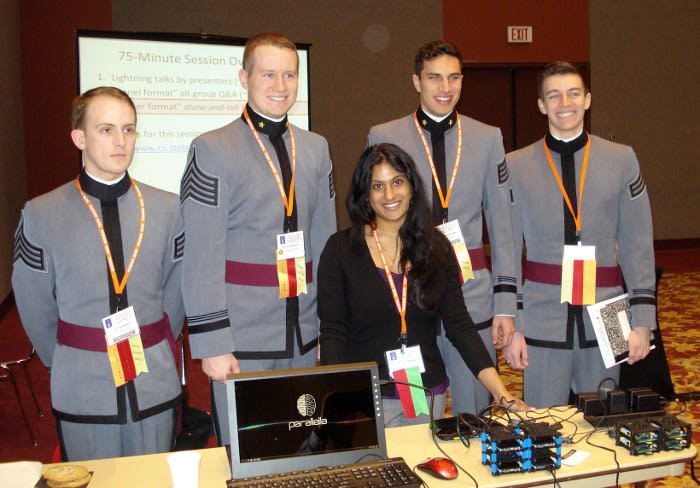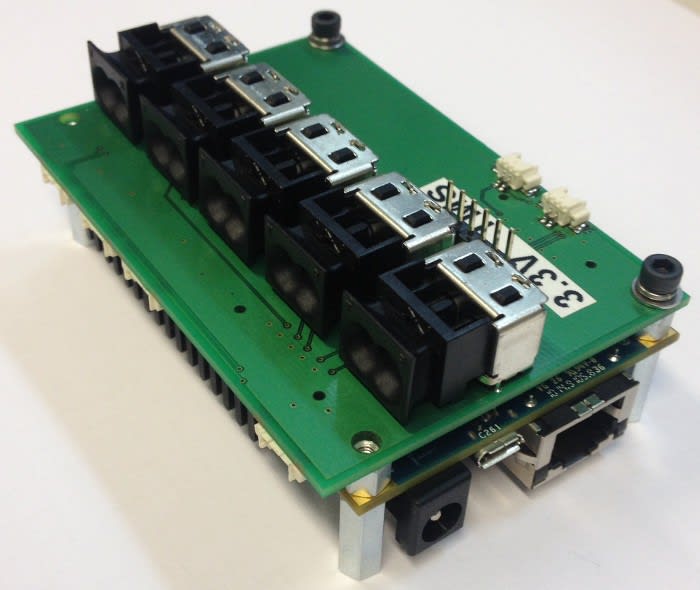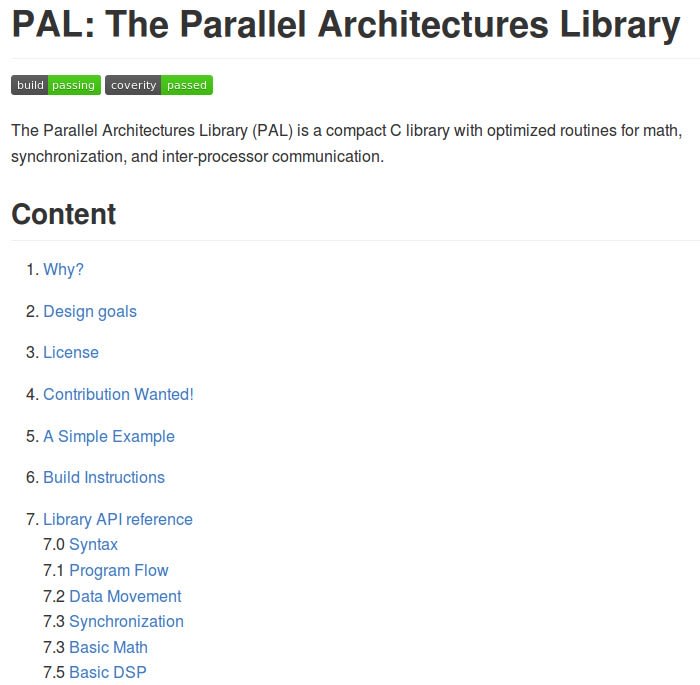Parallella in Academia
Follow articleHow do you feel about this article? Help us to provide better content for you.
Thank you! Your feedback has been received.
There was a problem submitting your feedback, please try again later.
What do you think of this article?
Increasing access to parallel computing in education and research.
Academia is one of the few areas that typically has access to parallel computing systems. However, while time can be booked on costly supercomputers for research projects that meet certain criteria, these machines are in high demand and anything but broadly accessible.
When the Parallella project launched on Kickstarter back in late 2012 it was with the goal of creating an eminently affordable and truly open parallel computing platform. With those who pledged $99 being rewarded with a credit card-sized computer that featured an ARM host running Linux, an FPGA and highly energy-efficient 16-core Epiphany floating-point accelerator.
Through Kickstarter and sales since then the Parallella computer has found its way into the hands on many thousands of developers, ranging from enthusiasts through to professional users working on next generation technologies. A great example of the latter being Knowm, who have brought the first memristors to market and have an emulator that utilises four 16-core Epiphany processors.
As one would expect, Parallella has also proved popular in academia and next we'll take a look at three areas of research where it has so far been put to use.
RADAR, Cryptography and a Robot
Parallella with custom fibre transceiver daughtercard (source: web.ics.ei.tum.de)
In a paper published in late 2013, researchers in Sweden described how they used the Epiphany processor to implement two key and computationally demanding components in synthetic aperture radar — an application with complex signal processing requirements and where parallel computing holds great promise. With the result being that one of these achieved a speedup of 8.9x over a state-of-the-art general purpose processor (GPP) that benefited from both later silicon generation technology and a clock speed 2.7x that of the Epiphany. In addition to which it was found that the components were 38x and 78x more energy-efficient when run on the many-core processor.
Katja Malvoni participated as a student in onclick="ga('send', 'event', 'link', 'external_link', 'parallella-in-academia|google-melange.com');" Google Summer of Code 2013, working with the Openwall project and tasked with porting bcrypt to the Epiphany processor and then integrating this with the JtR password cracker. Findings included that, while the performance of the many-core processor was comparable to x86 CPUs for this task, its energy-efficiency was tens of times higher and with linear scaling in performance when increasing the core count from 16 to 64.
Not all Parallella uses have been strictly parallel computing and given its low cost, compact form factor and the flexibility afforded by an FPGA and high-speed expansion, it can be put to many wider uses. A great example can be found in the research paper, “Herbert: design and realization of a full-sized anthropometrically correct humanoid robot”, where Parallella was put to use as a central controller and equipped with a custom daughter board driving fibre optic links at 200 Mb/s.
For more examples of where Parallella has supported research see the Academic Papers forum.
Providing an on-ramp
N-body simulation with 215 stars per Epiphany core
Making the move from sequential to parallel computing requires thinking differently — learning new concepts and structuring applications to get the most out of a many-core architecture. This can be quite daunting for newcomers, but fortunately there are plenty of examples available. These come in the form of the official Epiphany examples that are provided by Adapteva, along with the community contributed Parallella examples (both of which targeting the Parallella board). Ranging in complexity from parallel matrix multiplication, through to real-time ray tracing, hand-optimised (very) fast Fourier transform, and N-body simulation using MPI and with graphical display.
In addition to the examples there are also active and particularly helpful discussion forums where those new to parallel computing and/or the Parallella platform can find assistance.
PAL and OH!
The academic opportunities associated with Parallella are not limited to use in research, with another obvious example being supporting the teaching of parallel computing concepts. However, once students have grasped these the Parallel Architectures Library (PAL) provides the opportunity to put their understanding to the test, while contributing to a worthwhile open source project.
PAL targets over 60 functions for things such as math, DSP, image processing, synchronisation and communication. Design goals other than parallelism include an emphasis on speed and being compact (must work in rewarded with a free board.
Where PAL will appeal to software developers, OH! — an open hardware library — should appeal to digital design engineers. The library includes things such as the eLink FPGA implementation which is used to interface the Epiphany accelerator with the ARM host. Once again, contributions are welcomed and these could take the form of improvements to existing components, along with the implementation of new cores which further extend the Parallella platform capabilities.
In contributing to PAL or OH! it not only benefits the Parallella project, but those who use it in support of research and wider uses, while doing so in a peer reviewed and visible manner.
Parallella University Programme
As of summer 2013 over 100 universities and research institutes had already purchased Parallella hardware. In an effort to further support use in academia, Adapteva launched the Parallella University Program (PUP), providing a certain amount of free hardware to participating universities and enabling them to get off to a great start before making any financial commitment.
More about Parallella in the DesignSpark Parallella Design Centre
Top image: Dr Suzanne Matthews from the U.S. Military Academy and students at SIGCSE 2015, with a four node Parallella cluster that gives a total of 72 cores. Each node is enclosed in a custom 3D printed case that was designed by Dr Matthews. Source: acm.org.





